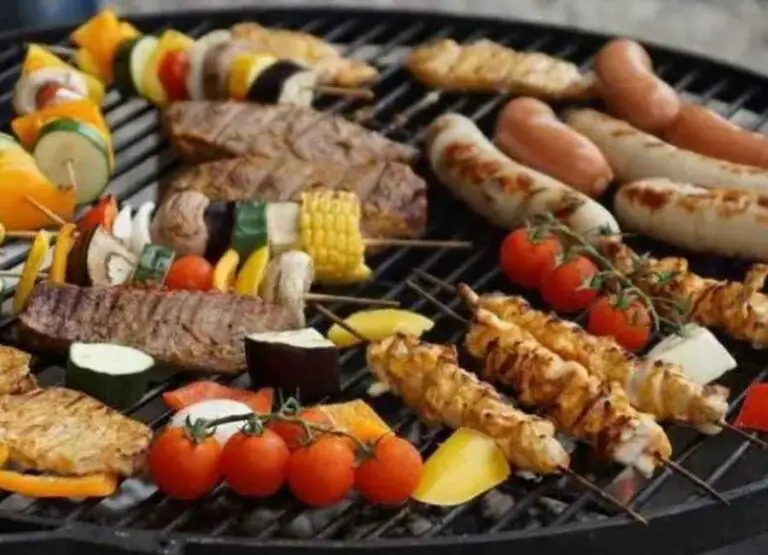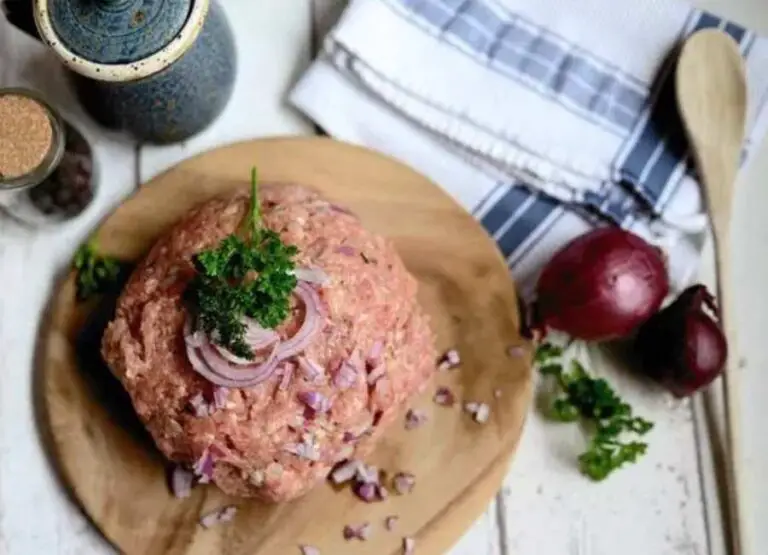Methods of Controlling Heat On Charcoal Grill
Are you tired of your delicious barbecue always being ruined by inconsistent heat on your charcoal grill?
Controlling the temperature is key to achieving perfect results, but it can be a real challenge.
In this short and sweet blog post, we’ll share some tips and tricks to help you master the art of controlling heat on your charcoal grill and take your grilling to the next level!
Methods of Controlling Heat On Charcoal Grill
Here are some common methods of controlling heat on charcoal grill you should know:
Method 1: Adjusting the Air Vents
The charcoal grill’s air vents are in charge of managing the airflow, which is necessary for sustaining the fire.
Open vents allow oxygen to enter the grill, feeding the fire.
The oxygen flow is decreased when the vents are closed, which cools the fire.
In order to manage the grill’s temperature, it is crucial to adjust the air vents as needed.
Step-by-Step Instructions for Adjusting the Air Vents
- The top and bottom vents should be fully opened to get started. The fire will ignite and the airflow will be maximized.
- You may begin adjusting the vents to attain the correct temperature as the grill heats up and the fire develops.
- Start by slightly covering the bottom vents if the grill is too hot. The airflow entering the grill will be reduced as a result, cooling the flames. If the temperature is still too high, you can partially seal the top vent to further lessen the airflow.
- Open the top and bottom vents to let additional air into the grill if it is not hot enough. As a result, the fire will burn hotter and receive more oxygen.
- Keep adjusting the vents until you achieve the desired temperature.
Method 2: Adding or Removing Charcoal
The main heat source for a charcoal barbecue is charcoal.
The heat of the grill will change depending on how much charcoal is added or removed.
Therefore, changing the amount of charcoal is a useful approach to regulate the grill’s temperature.
Step-by-Step Instructions for Adding or Removing Charcoal
- To add charcoal, use a pair of tongs to place new charcoal on top of the existing charcoal in the grill.
- Make sure the charcoal is evenly spaced so that air may pass through and maintain the fire.
- To keep the temperature where you want it, you can add additional charcoal as necessary.
- To remove charcoal from the grill, carefully remove a few pieces using a pair of tongs.
- It’s advisable to remove charcoal in modest amounts rather than all at once to avoid the temperature dropping too rapidly.
- To spread the heat and move the coals, you may also use a grilling instrument like a rake.
Method 3: Using a Water Pan
A charcoal grill’s temperature may be effectively controlled with the help of a water pan to stop food from cooking too soon.
The water pan acts as a barrier between the heat source and the meal, reducing the risk of the food being overcooked by direct heat.
Steam is produced as the water in the pan warms up, controlling the grill’s temperature and preserving the moisture of the food.
Step-by-Step Instructions for Using a Water Pan
- Start by filling a disposable aluminum pan with water and placing it on the grill grate.
- Arrange the charcoal around the water pan, leaving a space in the middle.
- Light the charcoal and adjust the air vents as necessary.
- As the water in the pan heats up, it will create steam, which will regulate the temperature of the grill and keep the food moist.
- You can also add flavor to the steam by adding herbs, spices, or other ingredients to the water. For example, you could add a few sprigs of rosemary or thyme to the water for a subtle herb flavor.
Learn more about different reasons why your charcoal grill keeps going out.
Method 4: Build a two-zone fire
By creating two zones on the grill, one with charcoal and one without, you can control the temperature by moving the food between the two zones.
Step-by-Step Instructions for Using a two-zone fire
- Start by lighting your charcoal, either with a chimney starter or with lighter fluid. Use the amount of charcoal appropriate for your recipe and the size of your grill.
- Once the charcoal is lit and has ashed over, use a pair of heat-resistant gloves to spread the coals out on one side of the grill only. This will create a two-zone fire, with direct heat on one side and indirect heat on the other.
- The indirect heat side of the grill will be cooler than the direct heat side. This is where you’ll cook more delicate foods or finish cooking foods that have already been seared.
- The direct heat side of the grill will be hotter, and it’s where you’ll sear meats or vegetables to create that lovely char and grill marks.
- If you need to adjust the heat of the grill, you can add or remove more charcoal to one side of the grill or adjust the vents on your grill to increase or decrease airflow.
- To cook using the two-zone fire, first sear the food on the direct heat side of the grill, and then move it to the indirect heat side to finish cooking through. This method allows you to control the temperature of the food and prevents it from burning or drying out.
Learn more about simple charcoal grilling safety tips.
Tips for Successful Heat Control on Charcoal Grill
Here are some common tips for successful heat control on a charcoal grill:
- Start with a clean grill grate: Make sure your grill grates are clean of any debris and buildup from previous cooking sessions, which can cause inconsistent heat.
- Use the right amount of charcoal: Use the appropriate amount of charcoal for your specific grill and the amount of food you’re cooking.
- Arrange charcoal correctly: Arrange the charcoal in a pyramid shape at the bottom of the grill so that the coals burn evenly.
- Use the right type of charcoal: Use high-quality, natural hardwood charcoal for a clean, even burn.
- Don’t overcrowd the grill: Don’t put too much food on the grill at once, as it can block airflow and cause temperature fluctuations.
- Use a two-zone fire: To create a hot and cool zone, push the coals to one side of the grill to create a direct heat cooking zone and a cooler indirect heat cooking zone.
- Control the airflow: Use the vents on the bottom and top of the grill to control the oxygen flow and temperature.
- Use a thermometer: Use a thermometer to monitor the grill’s temperature accurately, so you can adjust the airflow and the charcoal as needed.
- Practice: With practice, you’ll become more adept at controlling the heat on your charcoal grill and be able to create the perfect conditions for your cooking needs.
Learn more about the step-by-step process of cooking on a charcoal grill.
Factors that affect the temperature of a charcoal grill
There are several factors that can affect the temperature of a charcoal grill, including:
- Amount of charcoal: The more charcoal you use, the hotter your grill will get.
- Ventilation: The more airflow you allow through the grill, the hotter it will get.
- Weather conditions: Windy conditions can make it harder to maintain a constant temperature, while colder temperatures may require more charcoal to maintain steady heat.
- Type of charcoal: Different types of charcoal can vary in how hot they burn and how long they last.
- The proximity of the charcoal to the cooking grate: The closer the charcoal is to the food being cooked, the hotter the cooking temperature will be.
- The moisture content of the charcoal: Wet or damp charcoal may not get as hot as dry charcoal.
- Type of food being cooked: Foods with high-fat content and foods that require longer cooking times may require lower cooking temperatures to prevent burning.
Learn more about different ways of extinguishing a charcoal grill.
FAQs
How do I control the heat on my charcoal grill?
One of the easiest ways to control the heat on your charcoal grill is by adjusting the air vents on the grill.
Open the vents to increase the temperature, or close them to reduce the temperature.
You can also control the heat by adding or removing charcoal from the grill.
What is the best way to adjust the air vents on a charcoal grill?
The best way to adjust the air vents on a charcoal grill is to start with both vents fully open.
Once your grill reaches the desired temperature, you can adjust the vents to maintain the heat.
If you need to lower the temperature, start by closing the bottom vents, followed by the top vents.
How do I control flare-ups on my charcoal grill?
To control flare-ups on your charcoal grill, try using a water spritzer to dampen the flames.
Alternatively, you can move the food away from the flames or remove any excess fat to prevent flare-ups.
How can I create different temperature zones on my charcoal grill?
To create different temperature zones on your charcoal grill, you can use a two-zone fire.
Arrange the charcoal on one side of the grill for direct heat and leave the other side empty for indirect heat.
This will give you two temperature zones to work with.
What is the best way to control the temperature of smoking on a charcoal grill?
To control the temperature for smoking on a charcoal grill, you will want to use a low and slow approach.
Start by using a small amount of charcoal and add additional charcoal as needed to maintain the desired temperature.
You can also use a drip pan to prevent flare-ups and add moisture to the cooking environment.
How can I tell when it’s time to add more charcoal while grilling?
You can tell when it’s time to add more charcoal while grilling by monitoring the temperature of your grill.
When the temperature starts to drop, it’s time to add more charcoal.
Alternatively, you can use a chimney starter to light additional charcoal and add it to the grill once it is fully lit.
Learn more about the different things you need for charcoal grilling.
Conclusion
Controlling heat on a charcoal grill can seem daunting, but with a few tips and tricks, it’s easier than you think.
By adjusting the amount and placement of your charcoal, regulating the airflow, and using the right tools, you can achieve the perfect temperature for your grilling needs.


![What To Do If You Eat Raw Pork [Tips]](https://foodcreeks.com/wp-content/uploads/2023/02/What-To-Do-If-You-Eat-Raw-Pork-768x555.jpg)
![Can I Freeze Cooked Green Beans And Potatoes [Hints]](https://foodcreeks.com/wp-content/uploads/2023/05/Can-I-Freeze-Cooked-Green-Beans-And-Potatoes-768x555.jpg)
![How To Store Ground Beef [Useful Steps]](https://foodcreeks.com/wp-content/uploads/2023/03/How-To-Store-Ground-Beef-768x555.jpg)



